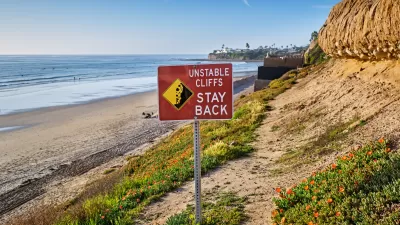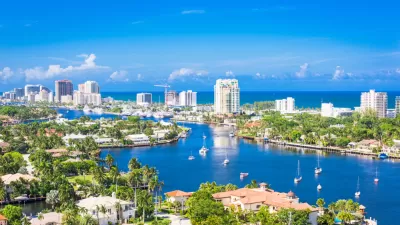How did the seven square mile, four-foot high barrier island in the Atlantic Ocean off Miami and Biscayne Bay hold-up to Hurricane Irma? The city arguably has done more to adapt to sea level rise in recent times than any other coastal city.

A post on September 14, largely written prior to Irma's first landfall on Sept. 10 on Cudjoe Key, part of the barrier reef islands known as the Florida Keys, and second landfall later that day on Marco Island, also a barrier island, in the Gulf of Mexico in southwest Florida, strongly suggested that barrier islands were best left undeveloped:
Barrier islands serve a critically important ecological purpose by preventing ocean swells and other storm events from disrupting water systems on their mainland sides, protecting the coastline.
"As the first line of defense during storms that threaten coastal communities, barrier islands are very important for reducing the devastating effects of wind and waves and for absorbing storm energy," according to the National Oceanic and Atmospheric Administration (NOAA) of the U.S. Department of Commerce.
Miami Beach dodged a bullet, or in the words of Mayor Phillip Levine on CNN on Sept. 11, "dodged a cannon," when Hurricane Irma veered westward, sparing southeast Florida a direct hit as had initially been forecasted on Sept. 8, it still endured flooding along with much of Miami-Dade County.
As initially posted, Miami Beach has been preparing for sea level rise, flooding, and storm surge for several years.
After he took office, in November of 2013, Levine fast-tracked a program to install electric pumps along Alton Road and other prime flooding spots on the city’s west side so that, during a storm surge or high tide, the pumps can be switched on, suctioning water off the streets and out into Biscayne Bay
In a conversation with CNN's Wolf Blitzer on Sept. 11, he tells how the adaptations fared:
And what we found is that during this historic high tide that we experienced with this tidal surge, all those areas that we improved were absolutely dry.
So for us, we are very excited. It was a success. But once again, you never declare victory against mother nature.
Levine adds that he believes Miami Beach is "a model for other cities" and serves as a reminder that investment is needed "in coastal cities to make them resilient because these weather events...are the new normal."
FULL STORY: Miami Beach: Model for Coastal Cities Adapting to Climate Change?

Planetizen Federal Action Tracker
A weekly monitor of how Trump’s orders and actions are impacting planners and planning in America.

The Simple Legislative Tool Transforming Vacant Downtowns
In California, Michigan and Georgia, an easy win is bringing dollars — and delight — back to city centers.

San Francisco's School District Spent $105M To Build Affordable Housing for Teachers — And That's Just the Beginning
SFUSD joins a growing list of school districts using their land holdings to address housing affordability challenges faced by their own employees.

In More Metros Than You’d Think, Suburbs are Now More Expensive Than the City
If you're moving to the burbs to save on square footage, data shows you should think again.

The States Losing Rural Delivery Rooms at an Alarming Pace
In some states, as few as 9% of rural hospitals still deliver babies. As a result, rising pre-term births, no adequate pre-term care and "harrowing" close calls are a growing reality.

The Small South Asian Republic Going all in on EVs
Thanks to one simple policy change less than five years ago, 65% of new cars in this Himalayan country are now electric.
Urban Design for Planners 1: Software Tools
This six-course series explores essential urban design concepts using open source software and equips planners with the tools they need to participate fully in the urban design process.
Planning for Universal Design
Learn the tools for implementing Universal Design in planning regulations.
Smith Gee Studio
City of Charlotte
City of Camden Redevelopment Agency
City of Astoria
Transportation Research & Education Center (TREC) at Portland State University
US High Speed Rail Association
City of Camden Redevelopment Agency
Municipality of Princeton (NJ)





























